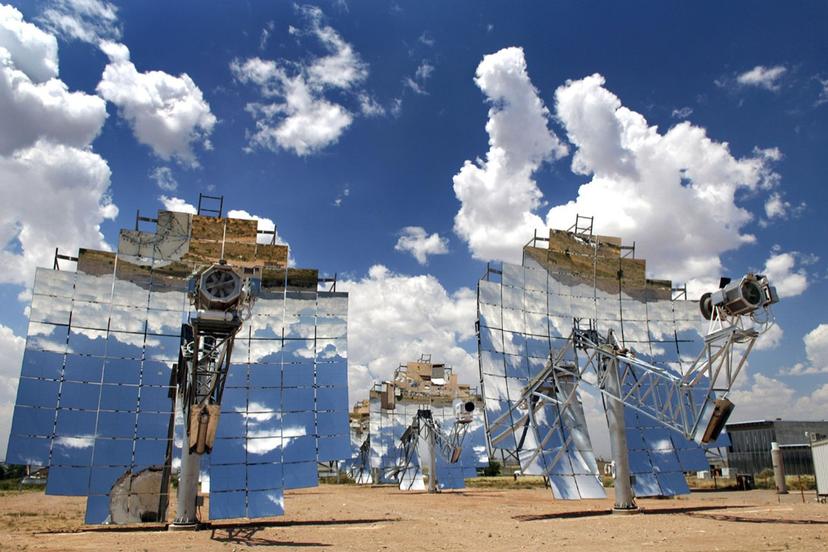Alternative Energy

Industry Outlook
According to the EIA, the United States consumed a record 101.3 quadrillion British thermal units (Btus) of energy in 2018, surpassing a record previously set in 2007. The consumption of renewable energy also reached a record high that year, totaling 11.5 quadrillion Btus. Solar consumption achieved the most significant increase (22%), followed by wind electricity consumption (8%). Approximately 45 percent of all renewable energy consumption was attributable to biomass (45%).
The EIA projected that energy consumption would increase in all major end-use categories (residential, commercial, industrial, and transportation) through 2050. However, total U.S. energy consumption is expected to be offset by improvements in efficiency. This will result in declines in energy intensity, which the agency defines as "the amount of energy consumed per unit of potential demand." The transportation sector, specifically, should experience the most noteworthy decrease in energy intensity because of more stringent vehicle standards for energy efficiency and fuel economy. The EIA anticipates that the consumption of non-hydroelectric renewable energy will achieve the most significant percentage growth in the coming decades.
The EIA also reports that U.S. shipments (including imports, exports, and domestic shipments) of solar photovoltaic (PV) modules totaled nearly 10.9 million kilowatts (KW) in 2017, down from 13.5 million KW in 2016, but up significantly from 2.6 million KW in 2010. Most solar PV panels installed in the United States have been connected to the national grid since 2004. These include solar systems on homes, buildings, and central-station power facilities. The EIA indicated that solar power surpassed biomass as the third-leading type of renewable electricity source in 2017.
The outlook for alternative energy jobs depends on the sector. Some sectors are expected to experience much higher growth than others. According to the Solar Foundation's National Solar Job Census 2018, the solar energy sector employed 242,343 workers, down 3.2 percent from 2017 but up 159 percent since 2010. Despite the overall decrease, the foundation noted that employment increased in 29 states. Several states led in employment, including Florida, Illinois, Texas, and New York.
Wind energy also was on a growth trajectory at the end of the decade. According to figures from the American Wind Energy Association, approximately 7,588 megawatts (MW) of new capacity was added in the United States during 2018. By early 2019, more than 56,600 wind turbines in 41 states, Puerto Rico, and Guam collectively produced 97,223 MW of wind power, representing 6.5 percent of the United States' electricity. The association noted that, over the previous 10 years, more than $142 billion had been invested in new wind projects, helping wind power to become the nation's leading source of renewable generating capacity. Employment wise, approximately 114,000 U.S. jobs were supported by the wind power industry, led by Texas, which employed more than 25,000 people.
Geothermal power plants operated in seven states as of 2018, according to the EIA. Collectively, they produced about 0.4 percent of the nation's overall utility-scale electricity, or 16.7 billion killowatt hours. California dominated geothermal electricity generation, accounting for 71.9 percent of the total, followed by Nevada (21.7%). Other states included Utah (2.8%), Hawaii (1.9%), Oregon (1.1%), Idaho (0.5%), and New Mexico (0.1%).
There is a broad range of salaries available in the alternative energy sector. Engineers typically earn the higher salaries, while field workers and operators earn lower salaries but can eventually earn higher salaries. For example, wind energy field workers can start out as low as $15 per hour, but after a number of years, they may earn up to $50 per hour.
Factors driving the demand for workers in the alternative energy industry are primarily the public demand for them, and government support encouraging their use. Building the infrastructure that allows wind and solar energy producers to join the national grid is costly. Taxpayer and government support is critical if these sectors are to continue to grow.
The prognosis on alternative energy in the era of COVID-19 includes mixed possibilities. While the cost of renewable energy has gone down in conjunction with decreased usage of fossil fuels in a time of quarantining and social distancing, the growth of renewables is expected to slow relative to its progress in 2019 as the industry grapples with the major social and environmental disruptions caused by the coronavirus pandemic. The International Energy Agency notes, however, that many renewable power projects that were delayed in 2020 due to the pandemic are expected to come online in 2021, increasing renewable energy capacity.
As described in an energy industry report by Deloitte, in 2020, decarbonization plans continued in states, cities, utilities and businesses, despite the pandemic and the economic recession. The demand for clean energy in the U.S. continues to be resilient, edging out "other electricity generation sources when electric demand fell...". The report predicts that growth of renewable energy could speed up in 2021, due to the plans for the U.S. to rejoin the Paris Climate Accord. The new U.S. administration also aims to invest $2 trillion in clean energy, "and fully decarbonizing the power sector by 2035 in order to achieve a larger goal of net-zero carbon emissions by 2050." In addition, federal support could help with the expansion of new technologies, particularly green hydrogen production and storage.
